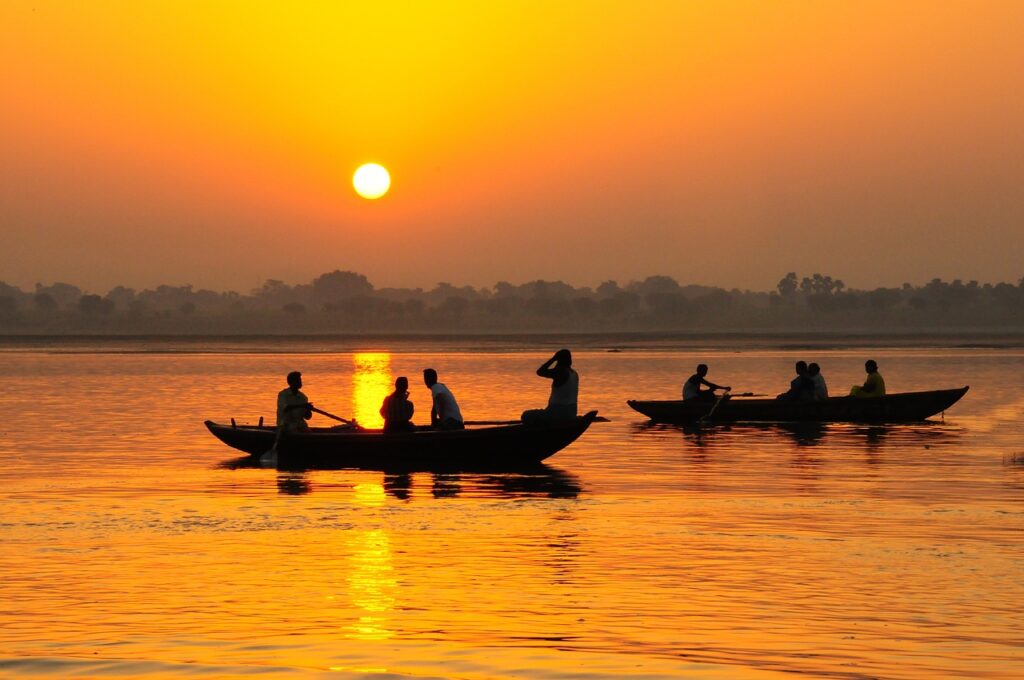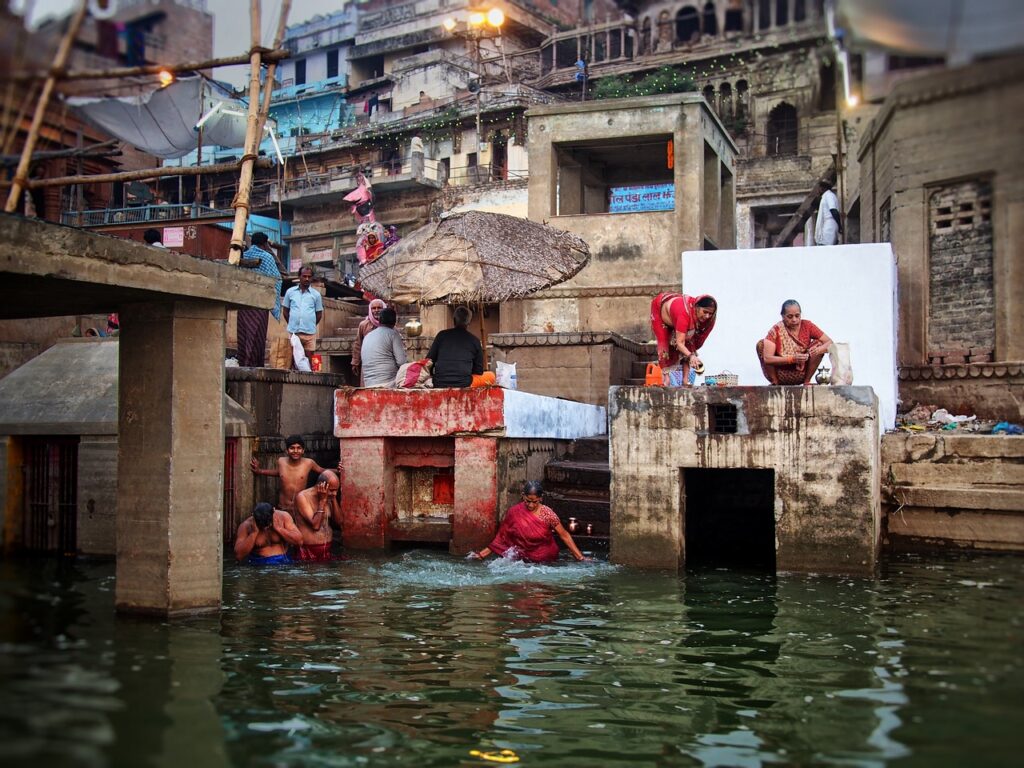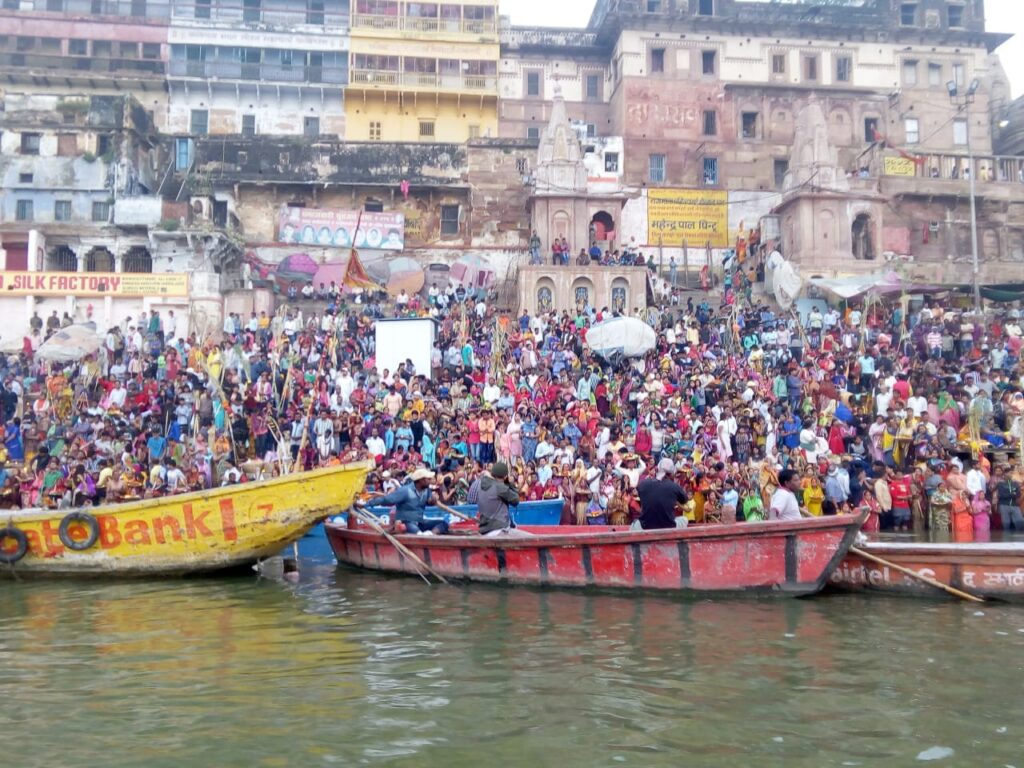Varanasi city of southeast Uttar Pardesh in India is a very popular city. This city is considered to be the Pious city among Hindus, Jains and Budhhist. Their faith is supported by the long past relation with this city. The city has number of temples of different faith. Its population has a major part of Hindu community, therefore many temples belong to Hindus. Many religions and cultures of this city make this city very unique. Therefore the city known as Varanasi a city of faith and culture.
The other communities that constitute the population of this semi-urban city are Muslim, Sikh, Jain and Budhist. The city is located on the bank of river Ganges, the longest river of India. Most of the Hindu Temples built near the River. It has many Ghats built by many different and important persons. It has 84 ghats on the city side. The Ghats are merely a long staircases in many sections to provide the safety to the people. Built with stones and concrete to use the river water without being washed away with the flow of the river. The most popular among all ghats is Dashavamedh ghat with many temples and places for worship.

The old names of Varanasi
This city is considered one among the oldest city of India. The river Ganges flows near this city and so called as the city of Ganges. For Hindu religion rivers are not only the source of water and cleanliness. The river Ganges is the most sacred river for Hindu religion. The river Ganges is said to be flowed on earth by the instance of Lord Shiva through his hair. It is to clean the soul and wrong deeds of the people on earth. Hence Varanasi a city of faith and culture describe its general conscience of the people toward its river and water quality.
Its old name is Kashi, the hair is called as Kesh in Sanskrit. Probably its old name Kashi came from the Kesh or Hair of Lord Shiva. During the colonial period the name of this city became Benaras. It is perhaps used as Varanasi by general people of the city, but officially the term Benaras used by the British. Though the name Varanasi came from two river flowed within the city.
These rivers name was Varuna and Asi. These were the artery river of Ganges and joined the river Ganges in this city. There is a ghat called Asi Ghat is the first ghat or (place of bathing) of 84 ghats. Well the interesting thing is that all these names of this city are equally popular and used generally. Therefore one can easily recognize this city by any of these names, but now the official name is Varanasi of the city.

Major tourist attractions of this city
Varanasi is a very attractive city while talking about foreign tourist arrival. The tourist of different cities of India and the world get attracted to this city because of its proximity to the river. The Temples of Hindu religion have many diversity in their form and shapes. They are devoted to different gods and their various association of animals as their vehicles and the story related to them.
The Sarnath is 7 kms away from the city and it is the place of different shrines, ruins, monestries, museum and Stupas. Mostaly the shrines belong to Budhist. The old ruins and museum do belong to the Budhist, Hindu and Jains. The ruins of Mulgundhakuti vihar was originally a group of temples, monestary, school and many more of 3rd century BC. Now there are only their remains which got excaveted and put inside a museum by a British Archeologist in 1910.
The Ruins of Sarnath Vihara in Varanasi
The ruins are revered by many budhist and they visit Dhamek stupa built by Ashoka in 3rd century. The lower part of The stupa is stones while the upper section is bricks. there are no windows and door to enter. The Mulgundha kuti vihara ruins have a large circular platform of bricks, was a stupa but bring down by invaders or by nature is not known. This stupa had the remains of Lord Budhha the illuminated. Gautam Budhha’s hair, nails, part of bones and scripture were put in this stupa. Now preserved in the National Museum of India In Delhi.
The devotees of Budhhs from different countries like China, Japan, Thailand, Combodia, Nepal, Bhutan, Tibbet, Shri lanka, Korea, and India built a new Temple here. The combined effort of these devotees built a Mulgundha kuti vihara temple to pursue the teachings of Gautam budhha. The temple has a sitting idol of Budhha and their important live events from birth to Nirvana (death) are painted on its walls. On the right side of temple under a Peepal tree the idols of Budhha and their five first 5 disciples are in sitting posture as receiving the first sermon from Budhha.
Budhist, Jain and Hindu Confluence in Varanasi
Budhha got illuminated under a Peepal tree in Bodhgaya a district in Bihar. Then he walked toward Kashi and meet their five disciples in route. In Sarnath Budhha first preached about his understanding of this world to these five disciples. Then they traveled to all the part of India and educated the mass. Therefore the Sarnath a part of Varanasi became a pious place for Budhist.
Kashi was already a major pilgrimage for Hindus. The sacred river Ganges and its rituals, temples and worship attract many from different parts of India to take sacred bath. In sarnath there is a yellow color Jain Temple built in the memory of 11th Tirthankers of Jains. It was the birthplace according to the Jain and so the Temple is visited by many the Jain community. It is located in the middle of ruins and temple complex of Mulgundha kuti Vihar. The confluence of Hindu, Budhist and Jain communities make the Varanasi a city of faith and culture.


You completed various nice points there. I did a search on the subject and found a good number of people will consent with your blog.